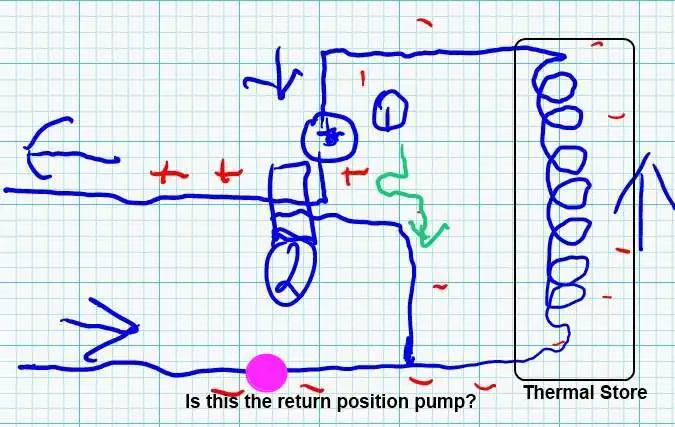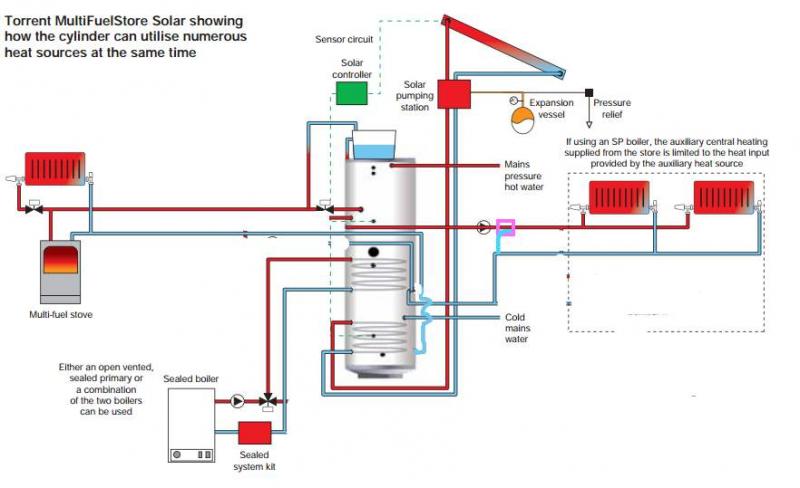OK, no comments on the quality of the diagram  .
.
1 = the pump
2 = blend valve
pipes going off the the left = ch system.
the blue arrows are the intended flow.
This is how it has been plumbed. I don't know if blending valve are non-return. The coil is the coil in the thermal store.
My question: is this a valid configuration?
It seems to me that if the water is too hot, then the valve will open to cooler return water, but because of the pump being on the hot flow only, the water will actually want to flow the wrong way down the cold inlet side of the valve to return through the coil and back to the low pressure (inlet) side of the pump. (the green arrow).
There will be no pressure diff to push the cold inlet water into the system.
Can somone explain / verify ....
TIA - I have a few more thermal store / fire questions, but think I should ask them one at a time.
1 = the pump
2 = blend valve
pipes going off the the left = ch system.
the blue arrows are the intended flow.
This is how it has been plumbed. I don't know if blending valve are non-return. The coil is the coil in the thermal store.
My question: is this a valid configuration?
It seems to me that if the water is too hot, then the valve will open to cooler return water, but because of the pump being on the hot flow only, the water will actually want to flow the wrong way down the cold inlet side of the valve to return through the coil and back to the low pressure (inlet) side of the pump. (the green arrow).
There will be no pressure diff to push the cold inlet water into the system.
Can somone explain / verify ....
TIA - I have a few more thermal store / fire questions, but think I should ask them one at a time.




